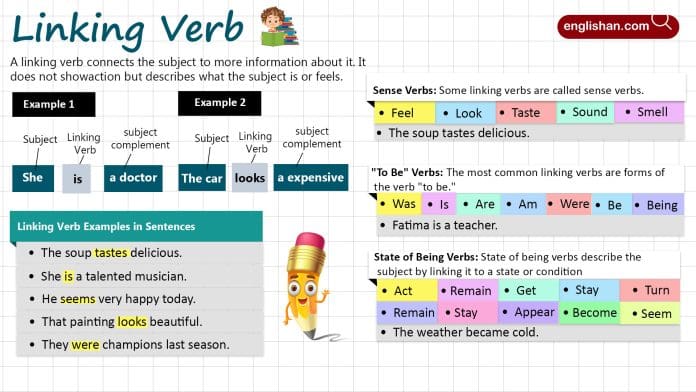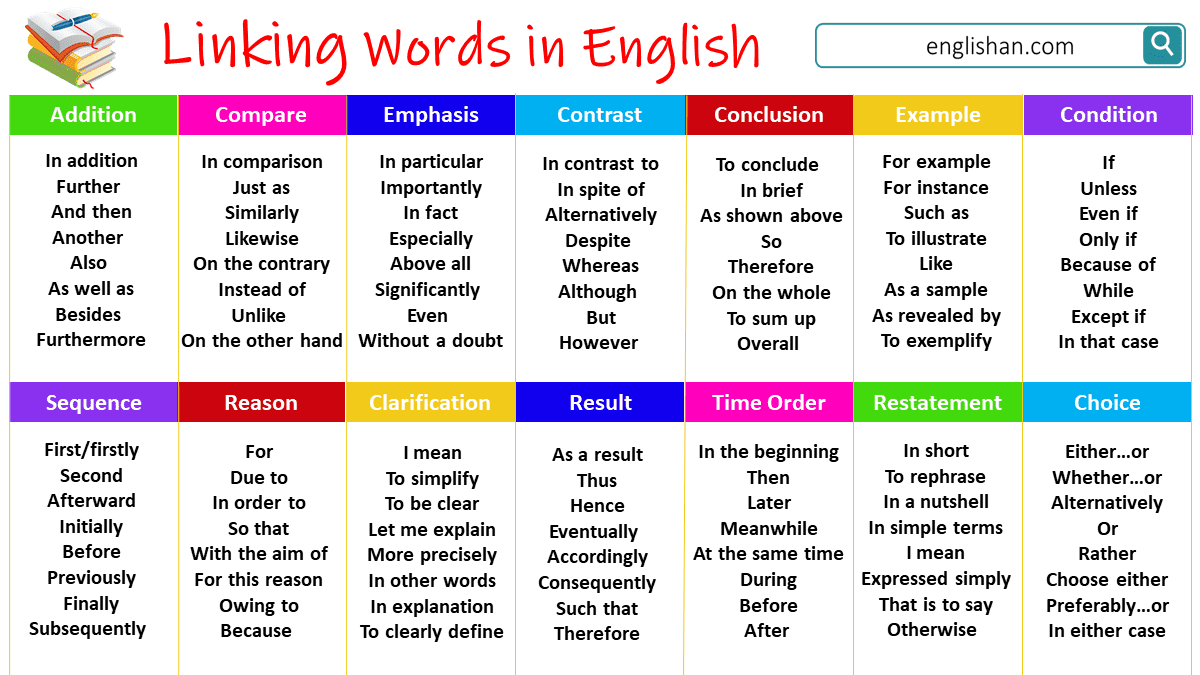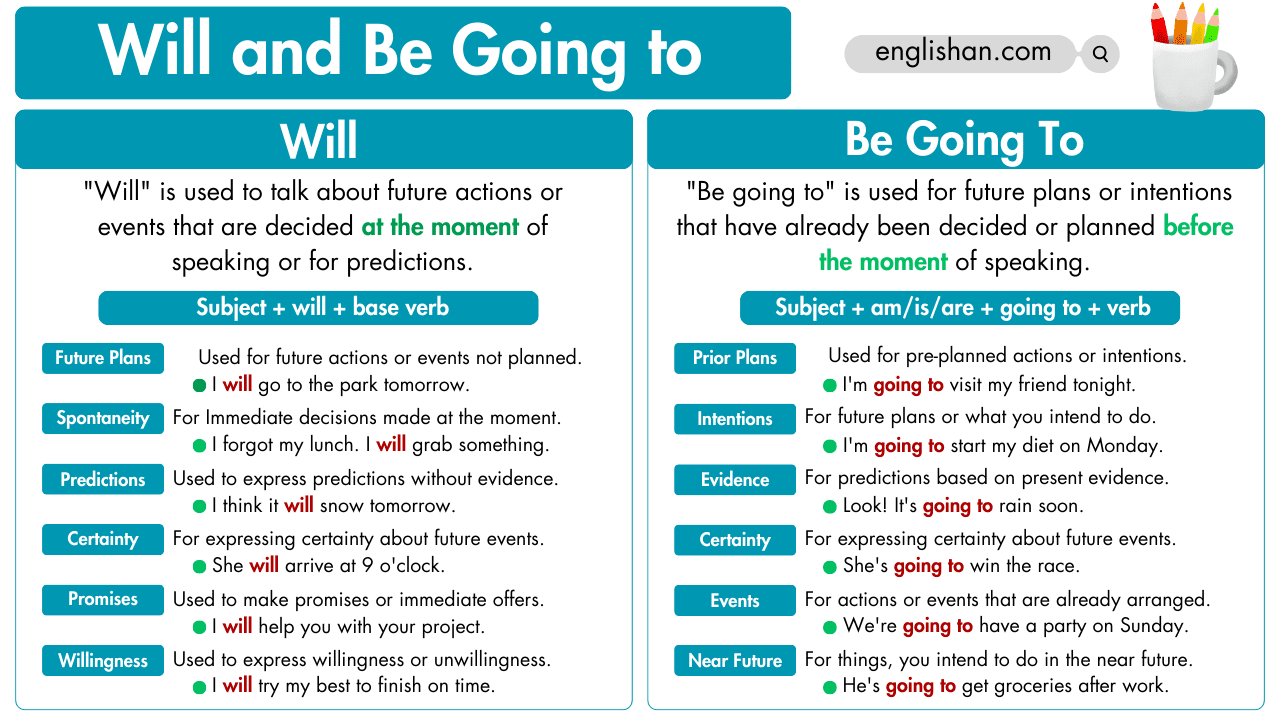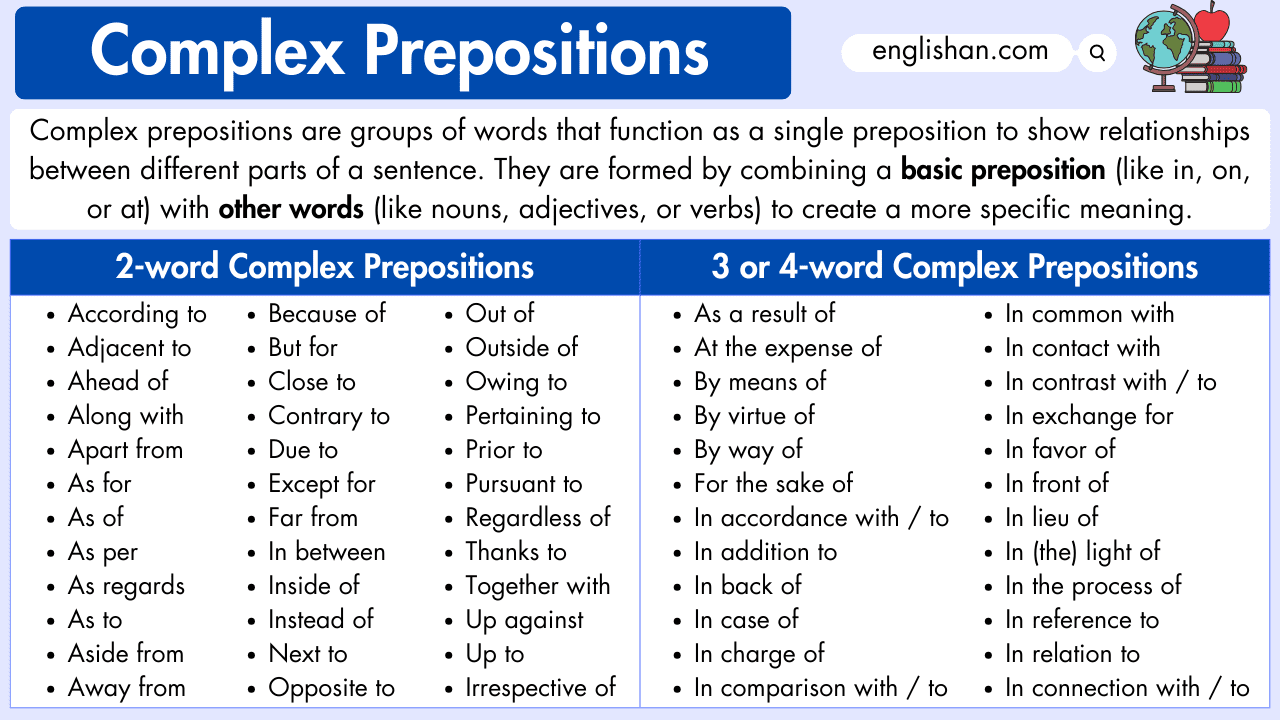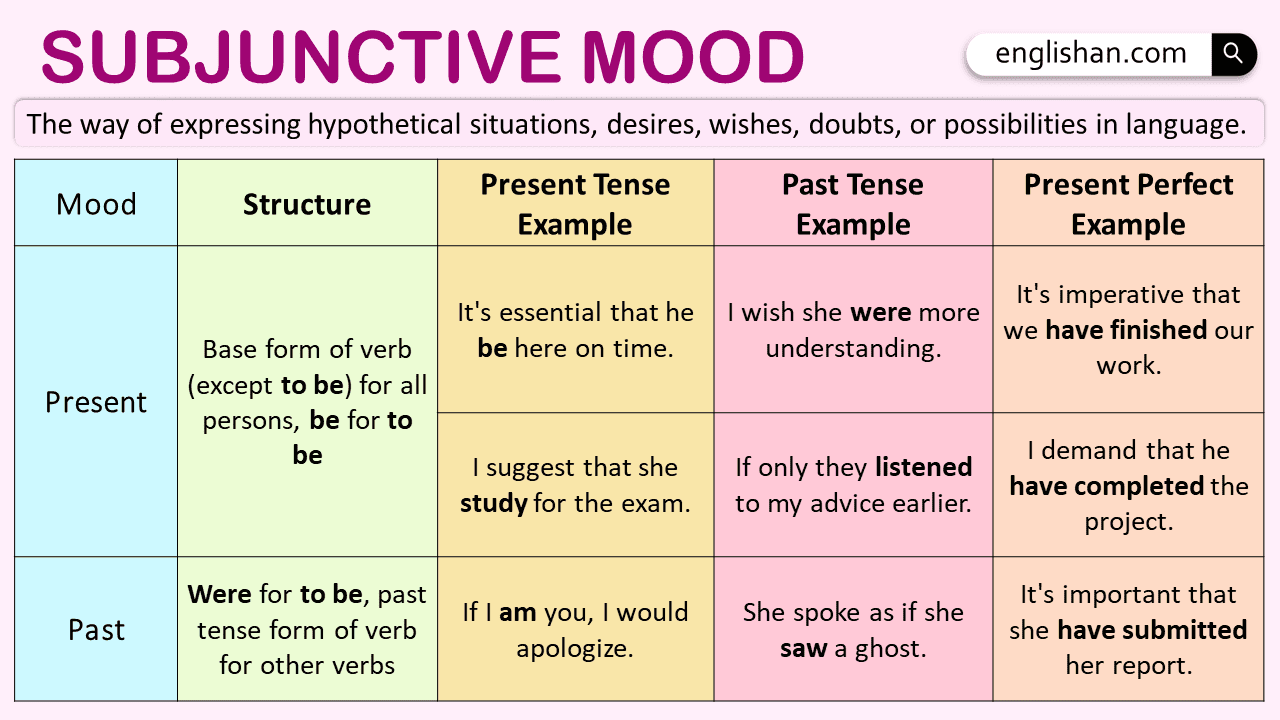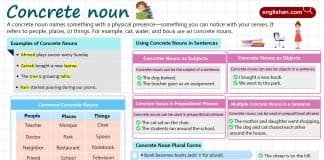Contents
Linking verbs are important in English grammar because they connect the subject of a sentence to its description or state of being. Unlike action verbs, which show what someone does, linking verbs help explain who or what something is. Learning to use linking verbs well can improve your writing and make your sentences clearer and more descriptive.
What is a Linking Verb?
A linking verb, also called a copular verb, connects the subject of a sentence to more details about it, like a noun, pronoun, or adjective. Unlike action verbs, they do not show any physical or mental activity. Instead, they give more information about what the subject is or how it feels. Common examples include “is,” “seem,” and “become.”
Example: Ahmed is happy.
In this sentence, “is” links the subject “Ahmed” to the word “happy.” Linking verbs do not show action; they simply connect two pieces of information about the subject.
Types of Linking Verbs
Linking verbs can be grouped into different types based on their function. Let’s explore some common types:
“To Be” Verbs
The most common linking verbs are forms of “to be.” These include:
- Am
- Is
- Are
- Was
- Were
- Be
- Being
- Been
These verbs link the subject to an adjective or noun that gives more information about it.
Example: Fatima is a teacher.
Here, “is” links the subject “Fatima” to her profession, “teacher.”
State Verbs
State verbs describe the subject by linking it to a state or condition. These include:
- Become
- Seem
- Appear
- Feel
- Look
- Sound
- Smell
- Taste
- Remain
- Stay
These verbs help describe the subject‘s condition or experience.
Example: The weather became cold.
In this sentence, “became” links the subject “weather” to the adjective “cold,” describing its condition.
Sense Verbs
Some linking verbs are called sense verbs. These include:
- Feel
- Look
- Taste
- Sound
- Smell
- Appear
Sense verbs link the subject to experiences that are felt through the senses.
Example: The flower looks beautiful.
Here, “looks” links the subject “flower” to the description “beautiful.”
Common Linking Verbs
Here is a list of common linking verbs:
“To Be” Verbs: Am, Is, Are, Was, Were, Be, Being, Been
State Verbs: Become, Seem, Appear, Feel, Look, Sound, Smell, Taste, Remain, Stay
Examples of Linking Verbs in Sentences
Here are some examples to help you understand linking verbs better:
- The soup tastes delicious.
- She is a talented musician.
- He seems very happy today.
- That painting looks beautiful.
- They were champions last season.
Linking Verbs in Different Tenses
Present Tense
Some linking verbs we use now are “is,” “am,” and “are.” They show how things are currently.
Examples:
- They are happy.
- The cake smells good.
- She is tired.
- The kids are excited.
Past Tense
Some linking verbs tell us how things were before. We use “was” and “were” to talk about the past.
Examples:
- He was a teacher.
- They were tired.
- The movie was boring.
- She was happy.
Future Tense
Some linking verbs tell us how things will be. We use “will be” to talk about what will happen later.
Examples:
- They will be happy.
- The event will be fun.
- He will be a good leader.
- The cake will taste good.
How to Identify Them
Identifying linking verbs can be tricky, especially when the verb could also be an action verb. Here are some tips:
- Substitution Test: Substitute the verb with a form of “to be.” If the sentence still makes sense, it is likely a linking verb.
- Example: Ali looked happy. If we replace “looked” with “is”: Ali is happy. This makes sense, so “looked” is a linking verb.
- Check for Complements: If the verb links the subject to an adjective, noun, or pronoun, it is a linking verb.
Linking Verbs vs. Action Verbs
Linking verbs and action verbs have different roles: linking verbs describe the subject, while action verbs show what the subject is doing.
Linking Verbs
Linking verbs connect the subject to more information about it. They describe a state of being or condition, not an action.
Example: The sky is blue. “Is” links “sky” to its description “blue.”
Common linking verbs include forms of “to be” (is, am, are, was, were) and verbs like “seem” and “become.”
Example: She seems tired. “Seems” links “she” to “tired.”
Action Verbs
Action verbs show what the subject is doing, either physically or mentally.
Example: The dog jumps high. “Jumps” shows what the dog is doing.
Example: He thinks about his homework. “Thinks” shows the mental action of “he.”
Why Linking Verbs Are Important in Writing
Linking verbs are essential for creating sentences that provide more details about the subject without showing action. They help make writing more descriptive by connecting subjects to their qualities or states.
Using linking verbs effectively can improve your writing style and make your sentences more interesting. By understanding how to use linking verbs, you can make your descriptions richer and clearer.
Linking Verbs vs. Helping Verbs
It is important to know the difference between linking verbs and helping (auxiliary) verbs. Linking verbs connect the subject to more information, while helping verbs are used with main verbs to form different tenses, moods, or voices.
Example (Helping Verb): She is running fast. Here, “is” is a helping verb for the main verb “running.”
Example (Linking Verb): She is happy. Here, “is” is a linking verb that connects “she” to the adjective “happy.”
Conclusion
Linking verbs are an essential part of English grammar because they help connect the subject of a sentence to more information without showing action. Whether you are describing a state of being, an experience, or providing extra details about the subject, linking verbs make your sentences more descriptive and clearer. of English grammar because they help connect the subject of a sentence to more information without showing action. Whether you are describing a state of being, an experience, or providing extra details about the subject, linking verbs make your sentences more descriptive and clearer.
By mastering linking verbs, you can make your writing more expressive and effectively convey your ideas. Understanding how to use linking verbs properly will greatly enhance the quality of your writing, making it richer and more engaging for your readers.
Frequently Asked Questions
Linking verbs connect the subject to more information about its state or identity, while helping verbs assist the main verb in forming different tenses or moods.
Yes, some verbs can act as both linking and action verbs, depending on the context. For example, “feel” can describe a physical action (“He feels the fabric”) or link to a state of being (“He feels happy”).
Use the substitution test: replace the verb with a form of “to be.” If the sentence still makes sense, it is likely a linking verb.
Read More
